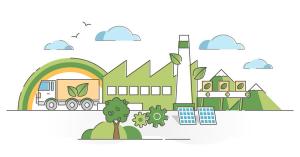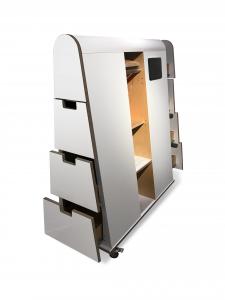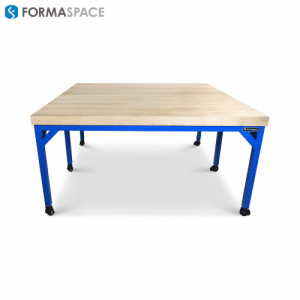US to Lead the World in Green Manufacturing
Thanks to the 2022 Inflation Reduction Act, this goal is in sight as companies plan to open new manufacturing plants across the USA.
But thanks to generous tax credits and direct payments from the 2022 Inflation Reduction Act, we might be able to catch up thanks to manufacturers suddenly deciding to open or expand production facilities here at home.
We take a look at the state of green manufacturing in America in this Formaspace manufacturing research article.
Energy Storage Production Incentives, Subsidized By The Gigawatt
Most of the new investment activity is centered around energy storage (aka battery) production.
Demand for BEVs is expected to skyrocket in the coming years, thanks to California (and now Washington state) legislating the phase-out of new ICE vehicles sales by 2035 and many fleet operators seeking to switch to all-electric fleets even sooner if possible (in Uber’s case by 2030).
Demand is also rising for battery storage systems that can bolster the electric power grid, providing additional capacity during peak demand hours as well as offering overnight storage when solar and wind power production tapers off.
So just how juice-y are these incentives?
Before we get into the numbers, let’s talk units. If you are not an electrical engineer, there’s a new language to learn when discussing power capacity.
- Battery packs for vehicles or home energy storage systems are often expressed in Kilowatt hours (kWh).
- A typical electric car battery capacity ranges from 40 to 100 Kwh or more –enough power to drive 100 – 300 miles or more.
- An average American home uses around 30 kWh of electricity per day.
- Electric power generation is usually expressed in Gigawatt hours (GWh), equal to a million Kilowatt hours.
- A power plant producing 1 GWh of electricity can typically power up 750,000 homes for an hour.
- Big battery factories use Gigawatt hours to quantify their annual production. The Tesla Nevada battery factory currently produces 35 GWh worth of batteries per year – equivalent to half a million 70 kWh batteries (although, in reality, they produce several different battery sizes.)
OK, now on to the IRA manufacturing incentives!
Production credits for energy storage batteries are divided into two categories:
The first available production credit is $10 per kilowatt-hour, awarded to manufacturers who assemble batteries into modules (defined as 2 or more cells wired in parallel) in the US – even if the individual battery cells themselves are sourced overseas, such as from China.
We think the idea here is to incent companies to re-shore battery assembly plants, e.g. an initial step toward building a vertically integrated domestic battery industry.
The second available production credit is a $35 per kilowatt-hour credit for domestic battery cell production, which requires a much bigger commitment to North American manufacturing.
In addition to the two production credits for battery production, the IRA offers a 10% investment tax credit available for creating new clean energy production facilities, such as metals refining/processing plants, to provide a local source of raw materials used in battery or solar panel production. Importantly, it appears that this particular tax credit can be applied to each separate step in the manufacturing process, e.g. 10% each for mining nickel, mining lithium, refining nickel, refining lithium, producing battery anodes/ cathodes, etc. etc.
Tesla Plans Added Battery Manufacturing Capacity In Nevada (In Partnership With Panasonic), California, And Texas
Taken together, these generous credits seem to be moving the needle toward reshoring or expanding battery production here in the U.S.
For example, the combined $45 per kWh credits (totaling $3,375) could reduce the cost of a 75 kWh battery made by Tesla by as much as 40%, according to analysts at Bernstein Research.
Currently, Tesla and its partner Panasonic jointly operate a battery factory in Nevada, producing 35 GWh of batteries per year.
When the IRA credits kick in on Jan 1, 2023, this factory will be able to claim $1.575 billion in tax credits at current production levels. (We understand that per their agreement with Panasonic, Tesla will receive the tax credits.)
Even before the passage of the IRA, Tesla had announced plans to ramp up the production of its new 4680 batteries in Nevada and Austin, Texas.
Read more...
Julia Solodovnikova
Formaspace
+1 800-251-1505
email us here
Visit us on social media:
Facebook
Twitter
LinkedIn
Legal Disclaimer:
EIN Presswire provides this news content "as is" without warranty of any kind. We do not accept any responsibility or liability for the accuracy, content, images, videos, licenses, completeness, legality, or reliability of the information contained in this article. If you have any complaints or copyright issues related to this article, kindly contact the author above.



